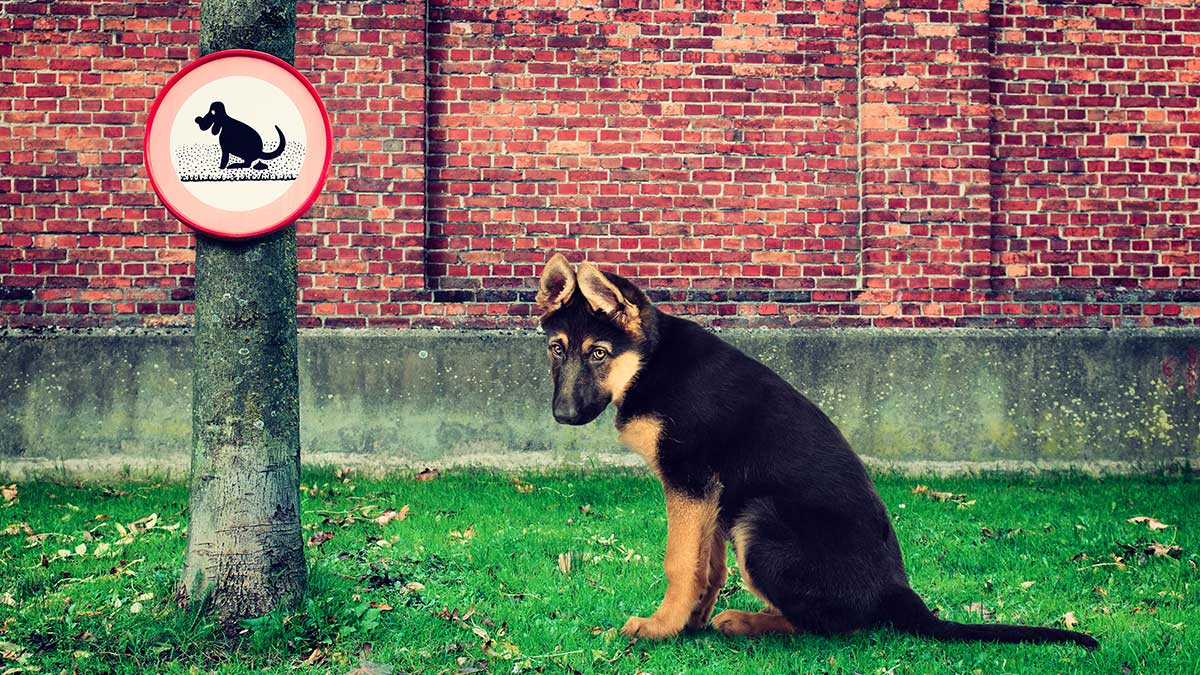For pet owners who are conscientious about the environment, the garbage pail may contain mostly doggy bags — of the pooper scooper variety. It’s galling to waste an organic material, and if your community has switched to every-other-week garbage collection, it can be noxious as well.
Does pet waste have to go to waste? Or can you compost it?
Reducing Waste
As always, reducing waste in the first place is the most ecological choice, but few animal lovers would consider sacrificing the joy of pet ownership to reduce waste. Nor is it a good idea to feed your animals less.
But what your animals eat does affect how much waste they produce. Some pet foods contain undigestable fillers that may be generating extra poop. Make sure you are giving your pet biologically appropriate, easily digestible food. Check with your vet before trying different foods to reduce your pet’s output.
Dramatic diet changes can have the opposite effect on your pet’s waste stream.
Why Not Let It Lie?
Why not leave poop where your pet drops it? After all, your lawn appreciates a layer of autumn leaves, and pet poo is organic matter, right? Yes, but no.
Animal waste is organic, but left alone, it is quite bad for the environment. Pet waste can transmit disease to other animals and even to humans. Pet waste smells bad, attracts flies and vermin, and makes a mess for any person or animal unlucky enough to step in it. When it breaks down, both surface and groundwater are polluted by its nutrients, and worse, parasites and high levels of E. coli and other bacteria.
Don’t Flush It
It may seem like a good idea to flush pet waste for treatment at a wastewater facility. That might be the greenest option. Check with your local wastewater utility to find out if you can flush your dog’s waste. But the truth is, most municipal water systems are not equipped to handle it.
The EPA estimates that pet dogs in America produce more than 8 billion pounds of poop each year — three-quarters of a pound per dog every day. Flushable pet waste bags don’t always dissolve fully in the sewer system and can cause clogs. Further, dog waste can contain Cryptosporidium, a parasite that also infects humans.
Ideally, wastewater treatment eliminates the parasite, but suboptimal treatment facilities or conditions can allow the parasite to spread. Cat feces should never be flushed. Cat waste can contain Toxoplasma gondii, a parasite that is infectious to humans and survives municipal water treatment.
Official Recommendations
Many websites claim the EPA recommends flushing–it does not. Perhaps it once did, but a brochure on the current EPA website recommends disposal in the garbage.
Even Seattle, a city famous for its early and enthusiastic embrace of recycling and composting, recommends disposing of bagged pet waste in the garbage. San Francisco also requires residents to bag and put pet waste in the black bin to be sent to landfill.
Composting
In the past, dog waste was among the more valuable manures farmers spread on fields, but the discovery of germ theory put an end to the use of uncomposted waste. A few places have experimented with large-scale pet waste composting, but municipal composting programs rarely accept pet waste with other organics. When residents don’t comply with rules for existing composting programs, cities can hardly be blamed for not trusting them to compost pet waste safely at home. But it is technically possible for those who are really serious about zero waste, and who are willing and able to make the commitment to safety.
To destroy pathogens, compost must reach 145 degrees Fahrenheit and maintain that temperature for several days, which is not feasible in a home compost bin. However, there is no guarantee that even a well-managed home compost pile will kill all bacteria and parasites. Never use compost from pet waste on food crops or where small children play.
To be safe, poop must be industrially composted, a process that can reach up 170 degrees.
But what if you don’t have a team of sled dogs? Proceed with caution when it comes to commercially available home pet waste composting systems. Many of them are too small to generate sufficient heat to kill pathogens; some are more like small septic systems than composters. Most of the available information about these products is provided by the manufacturers, who often talk about the general benefits of composting without providing specific safety information about the product.
Editor’s Note: This article was originally published on November 6, 2018, and updated in November 2024.
Source link
Gemma Alexander earth911.com

